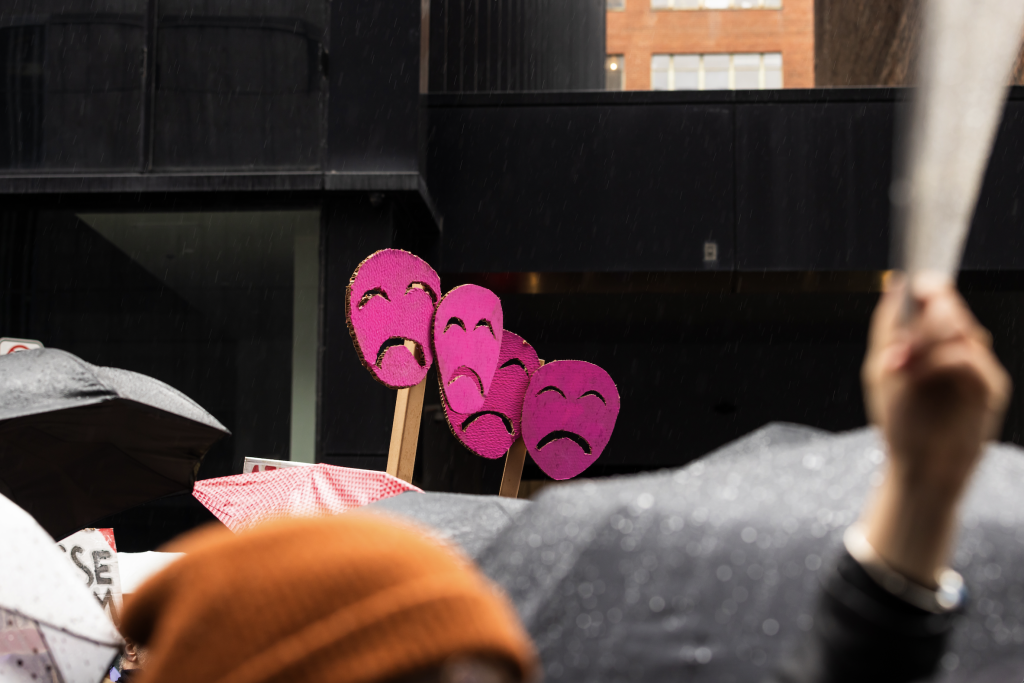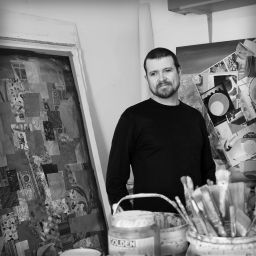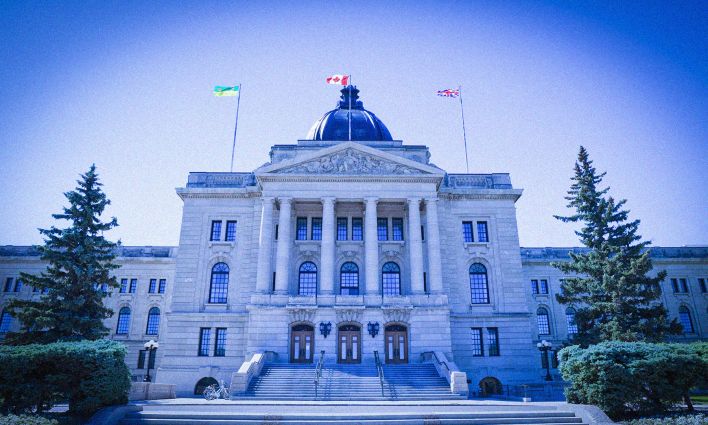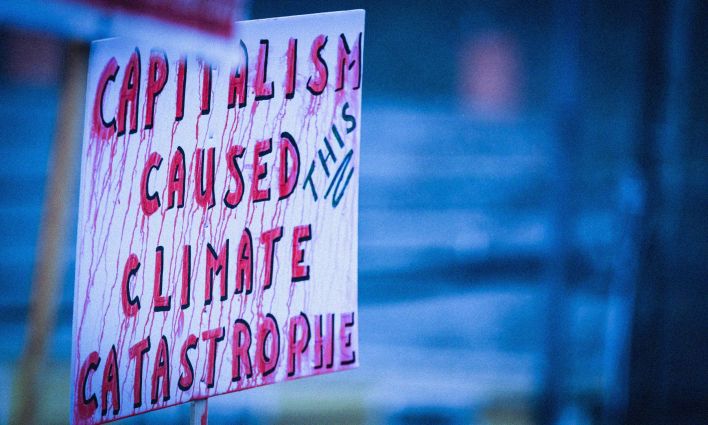You could hear the music from blocks away. More than a thousand dancers, painters, clowns, musicians, poets, and other cultural workers came out in Montreal on April 18 in front of the office of Quebec’s culture ministry for a ‘Mass Mobilization of Quebec Artists’ (Grande mobilisation des artistes du Québec, or GMAQ)—the first in a planned series of demonstrations.
The culture workers are demanding major funding increases in reaction to Quebec’s 2024 budget, which left the arts community “angry, confused and exhausted.” They want the arts budget doubled.
Walking into the rain soaked crowd through the police cordon, the feelings of anxiety and frustration were palpable—some visibly fought back tears while sharing their stories. Squeezing between raincoats, signs, and umbrellas to get a place in the tight packed crowd, I spoke with lighting designer Nine Desbaillet.
“With the cost of rent, food, utilities,” she asked, “how can you live?”
“Maybe if you don’t have kids, you’re single, have roommates, work like crazy, take cheap vacations… Artists are free-spirited, creative people, beautiful human qualities—but paid virtually nothing. Art is alive, it makes something of us, it makes us think and reflect. Art balances our hearts, minds, and bodies. But that’s treated as useless, and so we feel useless.”
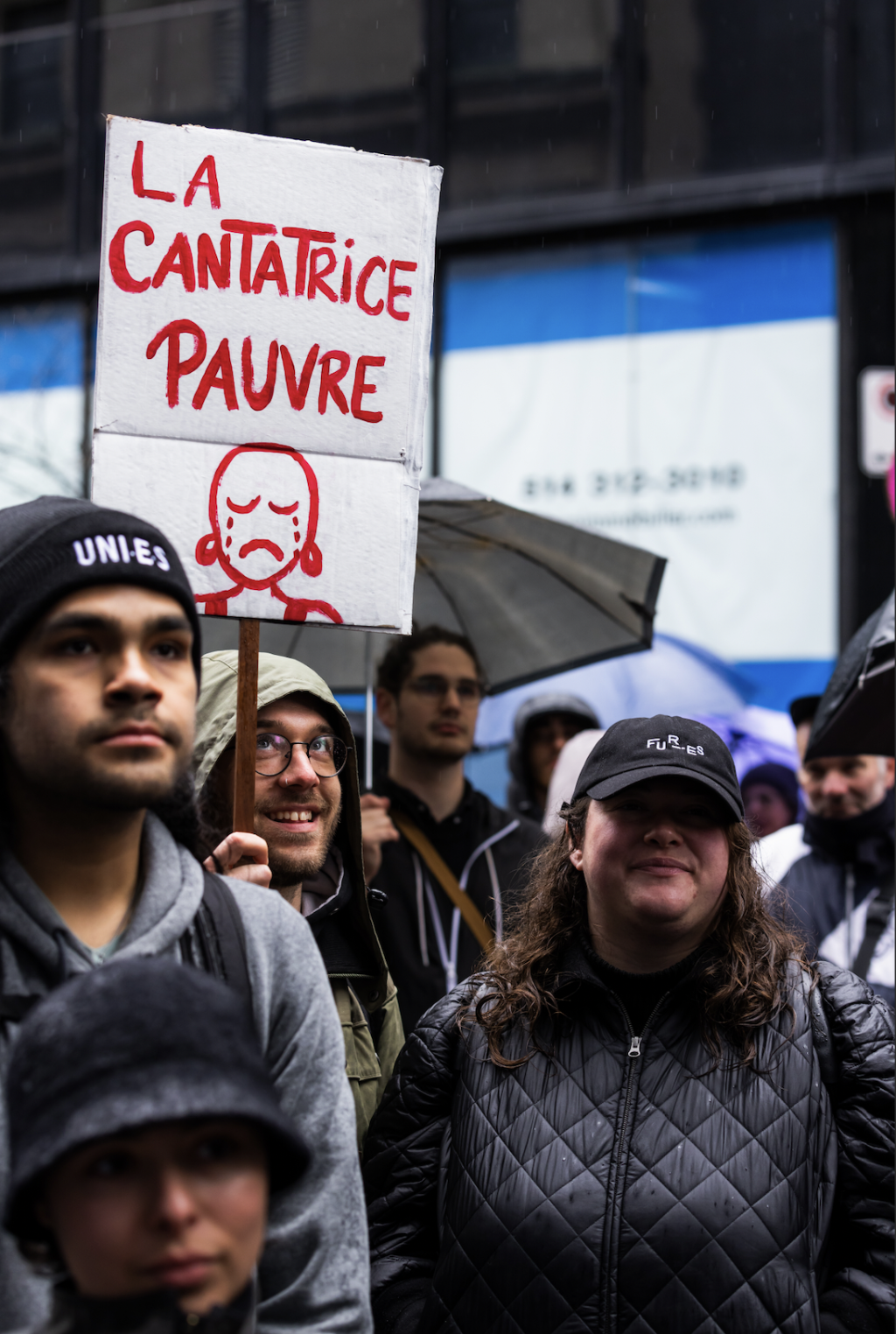
Organizers say allocations to the arts by the provincial government fail to preserve and celebrate Quebec’s culture. The provincial budget “shows the complete disregard of the government for the importance of culture in our society,” their press release says, “This budget plunges the creative ecosystem of Quebec—institutions, companies and artists—into a state of real and immediate crisis.”
They estimate that $100 million is missing to reach “a minimum sustainable threshold”.
Waiting for the speakers to take the mic a group of acrobats danced on others shoulders while red-nosed clowns watched from below tiny umbrellas.
“I’ve never seen a period as hard as this for the arts sector. And I’ve also never seen anything like the mobilization of artists right now—even during the pandemic. It’s really amazing.” said Laurence Dubuc, a policy analyst and researcher.
The speakers prepared at the podium, including known figures like actress Sophie Cadieux, general director of the TransAmériques festival David Lavoie, Artists Union president Tania Kontoyanni, actor Jean-François Casabonne and MNA Ruba Ghazal.
“The situation was different during COVID.” Dubuc continued, “There were closures, but ultimately a lot of work was distributed virtually which gave artists income and audiences art. During COVID extra money was injected into the arts and now that’s gone, and there are these cuts to the regular arts funding as well.”
I slipped between two jugglers and the staff of politics and arts journal Liberté who’d come out in solidarity. The number of groups represented was striking.
Inspired by the Quebec’s recent historic public sector strikes, the culture industry formed a Front commun pour les arts et les lettres. Among them, the Regroupement québécois de la danse (RQD), the Union des artistes (UDA), the Conseil québécois du théâtre (CQT), the Professional Association of show presenters RIDEAU, the Regroupement national des arts du cirque En piste, the Union of Quebec Writers the Regroupement des artistes en artsvisuals, and the Regroupement des centres d’artistes autogérés du Québec (RCAAQ).
Author and director Hugo Fréjabise took the mic: “We’re completely stunned by the catastrophic provincial budget. It's impossible to function with so little help. Something must be done—it’s an emergency!”
Many of the organizers were particularly concerned with the government’s reduction in funding for the Conseil des arts et des lettres du Québec (CALQ), which provides direct grants for artistic production and dissemination. That organization has a budget of $160.5 million for 2024-2025—nearly a million dollars less than the year before in absolute terms, nevermind adjusting for inflation.
During a pause at the mic, I spoke with experimental musician and musicologist Laurent Bellemare.“I had to progressively give up all of my creative music projects in favor of the ones that had a better ratio of energy expenditure vs. income,” he said, “I'd like to get back to creating my own music one day, but I don't see that happening anytime soon with the rapid inflation and poor funding for the arts.”
Protesters wore black to symbolize mourning for arts projects unrealized for lack of funding—not hard for a community that wears a lot of black. People in front of me began chanting, “there won’t always be culture,” and “my kingdom for a subsidy!”
According to a 2019 study by the Canada Council for the Arts (CCA) the median individual income of Canada’s artists is $24,300—that’s 44 per cent less than the median of all Canadian workers, and below the $25,252 low-income threshold for a single-adult household. Most Canadian artists live in or near precarity.
The situation’s even tougher for artists in urban areas like Montreal. As of March, the median rent in Montréal was $22,740 per year. If the average culture worker finds a room-share at half this price, they’d still be allocating nearly 50 per cent of their income to rent.
On the podium actress Sophie Cadieux spoke: “We have this god damn obsession with concrete in Quebec. Endless construction and building roads, buildings, spaces, but when the time comes to do something with these spaces, mysteriously we no longer have the budget..."
According to the December report of the Canada Council for the Art (CCA), during the first nine months of the 2023-2024 fiscal year, the organization paid $232 million to stakeholders in the Canadian cultural sector—that’s $40 million less than during the same period the previous year. Its annual budget is slated to be reduced by nearly $21 million over the next three years thanks to the budget cuts requested by the federal government from all Crown corporations
“This year the rate of acceptance of CCA grants has fallen below 16 per cent—a tiny amount—and it doesn’t respond at all to the actual need,” said Dubuc.
A sign reading, ‘When the public doesn’t fund the arts, only rich artists speak for the public!’ sagged in the rain in front of me.
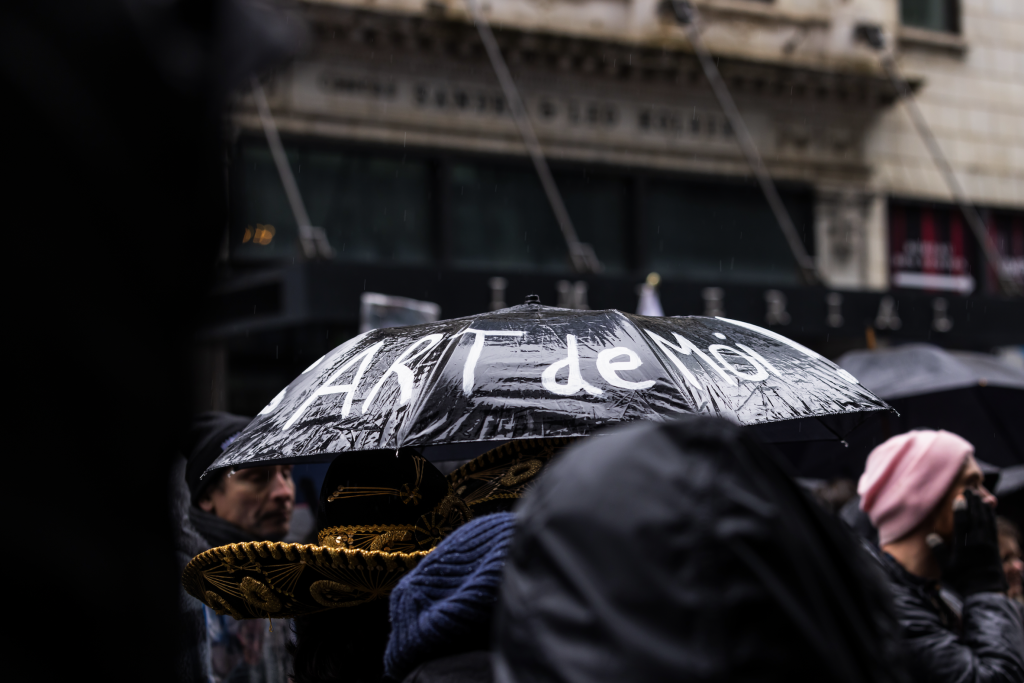
“In order to see a really flourishing arts budget, we would effectively need to double it on both the federal and provincial levels,” said Catherine Bodmer, General Director of the Regroupement des centres d'artistes autogérés du Québec (RCAAQ). “Obviously we don't want artists to become completely dependent on the state but people should understand it's an investment. We've calculated that every dollar spent on culture generates three into the general economy, so it's not like the state’s just an ATM spitting out money.”
The business case for Canadian public arts funding is compelling. In Ontario every $1 of provincial funding invested through Celebrate Ontario, a program which financed festivals and cultural events for tourism purposes, produced nearly $21 of visitor spending. The impact of the 2021-22 Celebrate Ontario Blockbuster and Reconnect funding is estimated to have generated over $1 billion in economic benefit across the province.
Cuts have clear economic impacts as well. When the Just For Laughs Festival in Montreal was cancelled last year, the estimated loss to Qubebec’s GDP was $34 million—the equivalent of 500 full-time jobs.
Some economic estimates of rates of return on public arts funding go as high as one to seven, noticeably outperforming infrastructure and construction projects.
“It’s hard to explain why governments aren't more responsive to the economic arguments for supporting the arts. Even if you approach them with all the facts and statistics—how art stimulates the local economy—they just don’t listen.” said Dubuc
“And the precarity is tough on audiences too,” she continued, “Most families have to make cuts somewhere—who’s going to go see a show for $30 when it means $30 less groceries? Governments can offer solutions like ‘cultural passports’ where you're given an amount of money that can be used exclusively for arts activities so they can rebuild the relationship with the arts they had before the pandemic. But the government has to fund it.”
“The underfunding of arts organizations is also chronic.” said Bodmer, “We often have very small teams of underpaid workers and high turnover because people leave for higher paying work. Retention is a priority for us now. It may be a little melodramatic to say this, but it feels like we're seeing folks abandon ship.”
Public perceptions of artists pose challenges too. “It seems in a neoliberal atmosphere we think of the artist as an entrepreneur, so if they don’t succeed they should just get another job,” Bodmer said. “It's the law of the jungle out there.”
“There's a real misunderstanding about how for artists their profession and personal identities are completely fused together,” said Dubuc, “When you ask an artist to change their job it's not like in other parts of the labor market. It's not just a profession—it's who they are.”
I leaned around a large sign that said only, “Accursed Banana!” to hear Ruba Ghazal speak. “A lot of time we say that we are proud to be Quebecers, but what does that mean without artists to say what the Quebec identity is?”
“The purpose of the arts is misunderstood too. It's not just people producing objects to be consumed.” said Bodmer. “Culture has a social role in the community, art makes people meet themselves. It gives an experience. It’s not simply consuming cultural objects—although of course we also want artists to sell work. But what art offers is a reflection and experience. Artistic activity in the society and in the community contributes not only to physical and mental health, but adds to the knowledge and the imagination of people who aren’t artists themselves but who benefit from and appreciate art.”
People stayed long after the official demo was over to talk and share stories. I began packing my gear.
“Right now there's a real spirit of movement and solidarity in Quebec across industry lines.” added Dubuc, “It's not just healthcare workers, it's not just the artists but everybody. People are getting organized, and organizations are getting better at lobbying and building public pressure. Is it likely to fix everything? No, but it’s really exciting and encouraging to see this.“
Walking out of the demo I passed a ‘mausoleum’ of miscellaneous objects representing projects not financed by the CALQ. Even in the midst of protest the artists are still creating.
Organizers say this is just the beginning. “We’re planning a whole spring of demonstrations!” said Sarah Laurendeau. Two further actions are planned for May 16 and June 13. “We won’t give up!”
Percy Shelly said that "poets are the unacknowledged legislators of the world.” Judging by the energy and organization of this demonstration, government legislators have picked the wrong people to shortchange.


